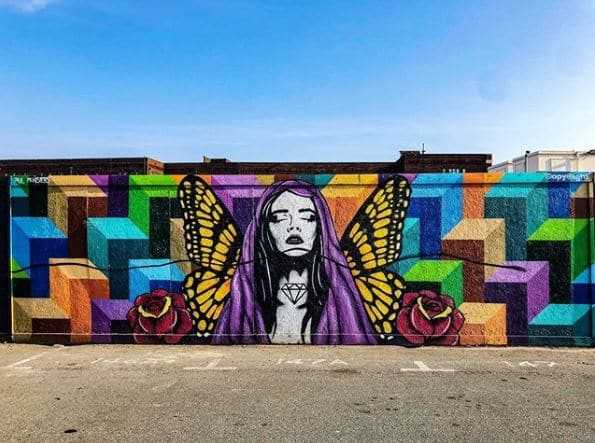Located in the southernmost part of India, Kerala is known for its distinct culture and vibrant art forms. One of the most fascinating aspects of Kerala’s artistic heritage is its traditional paintings. These paintings not only reflect the rich history and cultural traditions of Kerala, but also capture the essence of its people and landscapes.
Traditional paintings of Kerala are characterized by their vivid colors, intricate details, and unique themes. They are usually created on various mediums such as cloth, wood, or walls, using a combination of natural pigments and vegetable dyes. The artists, often hailing from the local communities, employ techniques that have been passed down through generations, ensuring the preservation of these ancient art forms.
The subjects of these paintings are diverse and depict a range of themes, including religious and mythological stories, rural life, nature, and traditional rituals. Each painting tells a story in its own way, with symbols and motifs that hold cultural significance. The artists use techniques like brushwork, shading, and line work to bring life to their creations.
Traditional paintings of Kerala not only serve as a visual delight but also showcase the deep-rooted connection between art and spirituality in the region. They are not just decorative pieces but serve as a medium of expression, carrying forward the cultural heritage of Kerala to future generations. These paintings continue to be cherished and appreciated for their beauty and historical significance, making Kerala a hub of traditional art in India.
Traditional paintings in Kerala are like a vibrant canvas that showcases the rich cultural heritage of the state. These paintings not only reflect the artistic prowess of the people but also serve as a visual narrative of the history, mythology, and traditions that have shaped Kerala’s identity over the centuries. From the colorful murals of temples to the intricately detailed ritual art forms, Kerala’s traditional paintings are a treasure trove of artistic expression.

The traditional paintings of Kerala are a blend of various techniques and styles, each with its own beauty and significance. One of the most famous painting styles is the “Mural Painting,” which involves creating large-scale wall paintings using mineral pigments. These murals can be found in ancient temples and depict scenes from Hindu mythology, showcasing the state’s deep-rooted religious beliefs.
Another popular style of painting is the “Kalamezhuthu,” which is a ritual art form created using natural pigments. These paintings are temporary and are done on the floor as an offering during religious ceremonies. They typically depict deities or mythological characters and are characterized by their vibrant colors and intricate patterns.
Promoting Cultural Preservation
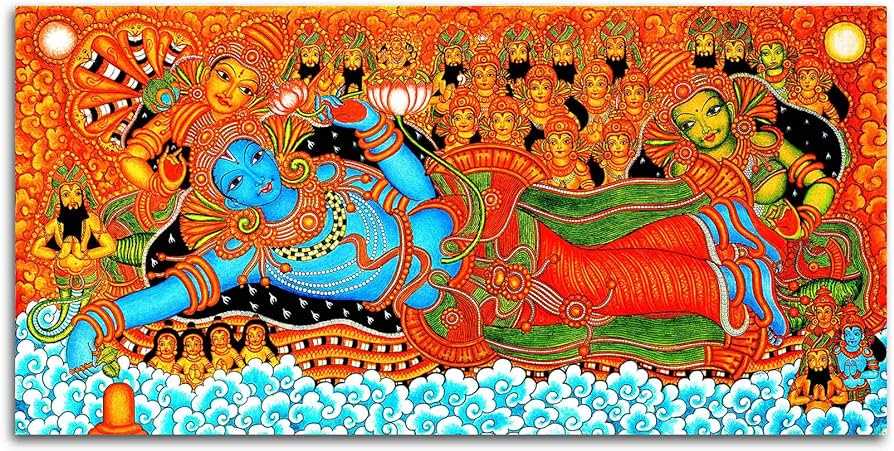
The traditional paintings of Kerala play a vital role in preserving the state’s cultural heritage. They are not only a means of artistic expression but also a way to pass on stories, traditions, and values from one generation to another. Through these paintings, the younger generation can learn about their roots and connect with their cultural identity.
Efforts are being made to promote and revive the traditional painting techniques of Kerala. Various art institutions and organizations are conducting workshops and training programs to ensure that these ancient art forms are not lost to time. By doing so, they are not only preserving the beauty and heritage of Kerala’s traditional paintings but also providing a platform for local artists to showcase their skills and talents.
Conclusion
Traditional paintings are an integral part of Kerala’s culture, serving as windows to its rich history and vibrant traditions. Through their mesmerizing beauty, these paintings bring to life the stories and beliefs that have shaped the identity of the state. It is essential to continue appreciating and preserving these traditional art forms as they are an invaluable asset to Kerala’s cultural legacy.
The Art of Kerala
Kerala, a state in southern India, is renowned for its vibrant and diverse artistic traditions. The art forms of Kerala reflect the rich cultural heritage of the region and have evolved over centuries.
One of the most prominent traditional art forms in Kerala is Kathakali. Kathakali is a classical dance-drama that combines elements of ballet, opera, and pantomime. It is known for its elaborate costumes, dramatic makeup, and intricate facial expressions. Kathakali performances often portray stories from Hindu epics like the Ramayana and the Mahabharata.
Another popular art form in Kerala is Theyyam. Theyyam is a ritualistic dance form that is performed in temples and sacred groves. It is characterized by its vibrant costumes, elaborate makeup, and energetic movements. Theyyam performances are believed to invoke the presence of deities and offer blessings to the community.
Mural paintings are also an integral part of Kerala’s artistic heritage. These large-scale paintings are typically done on the walls of temples and depict scenes from Hindu mythology. The colors used in the mural paintings are derived from natural pigments, giving them a unique and vibrant appearance.
Other art forms in Kerala include Mohiniyattam, a graceful dance form performed by women; Nangiarkoothu, a solo female dance-drama; and Thullal, a form of dance accompanied by verse recitation.
The art of Kerala reflects the religious and cultural traditions of the region and plays a vital role in preserving and promoting its heritage. It is a testament to the creativity and artistic talent of the people of Kerala.
Exploring Kerala’s Colorful Palette
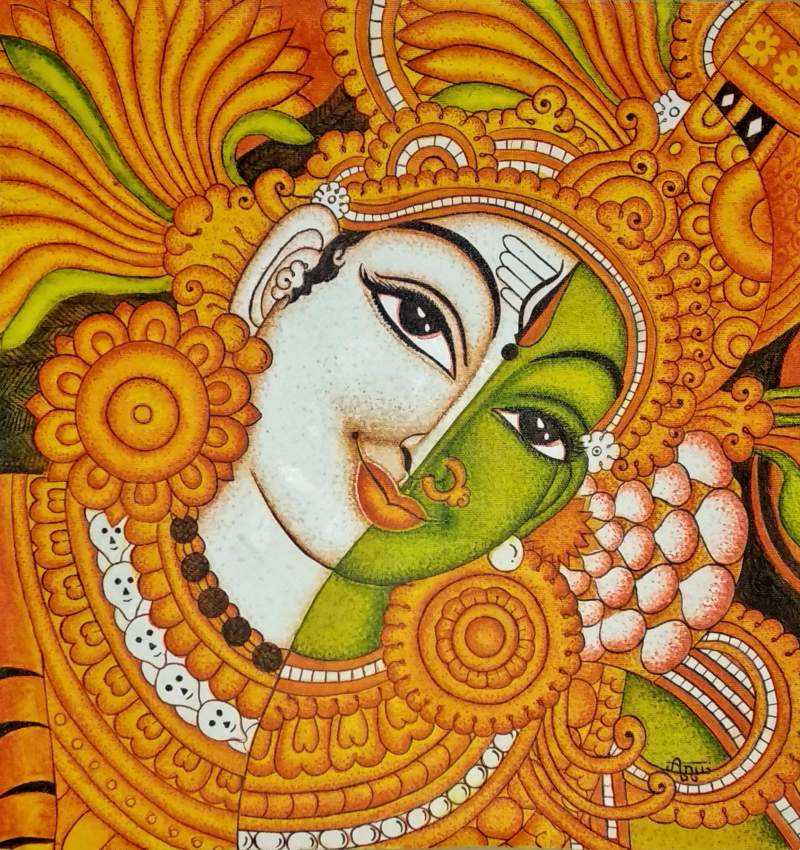
Kerala, a state in Southern India, is known for its vibrant and rich artistic heritage. The traditional paintings of Kerala are a true reflection of the state’s colorful culture and history. These paintings, which have been created by generations of skilled artists, showcase the beauty of Kerala’s landscapes, traditions, and mythology.
One of the most famous styles of traditional painting in Kerala is the Kerala Mural art. This art form dates back to the 9th century and is known for its intricate details and vibrant colors. Kerala Mural paintings usually depict religious and mythological themes, with gods, goddesses, and epic stories being a common subject. The artists use bold lines, contrasting colors, and intricate patterns to create visually stunning compositions.
Another prominent style of painting in Kerala is the Tanjore Painting. This style originated in the 16th century and is characterized by its use of gold foils and vibrant colors. Tanjore paintings typically depict Hindu gods and goddesses, as well as scenes from ancient Indian mythology. The artists use 24-carat gold leaves, semi-precious stones, and bright pigments to create a rich and opulent effect.
Exploring Kerala’s traditional paintings is like taking a journey through the state’s rich cultural heritage. These paintings are a vibrant celebration of Kerala’s folklore, mythology, and traditions. They offer a glimpse into the lives of Keralites, their beliefs, and their way of life. Whether it’s the bold strokes of Kerala Mural art, the opulence of Tanjore paintings, or the dramatic expressions of Kathakali paintings, each style has its unique appeal and tells its own story.
The traditional paintings of Kerala are not just stunning works of art, but also a testament to the artistic skill and creativity of the people of Kerala. They continue to inspire artists and art enthusiasts alike, keeping the legacy of Kerala’s artistic heritage alive.
So, if you ever find yourself in Kerala, don’t miss the opportunity to explore its colorful palette and immerse yourself in the world of traditional paintings.
Brushstrokes that Tell Stories
The traditional paintings of Kerala are not just mere colors on a canvas; they are a reflection of the vibrant culture and rich heritage of the people of Kerala. These paintings use intricate brushstrokes to tell captivating stories of legends, mythology, and everyday life.
Each brushstroke in these paintings carries deep meaning and symbolism. From the delicate strokes to the bold and powerful ones, each stroke adds layers of emotions and thoughts to the artwork. The artists pay meticulous attention to every brushstroke, ensuring that each stroke conveys the desired message.
Legends and Mythology
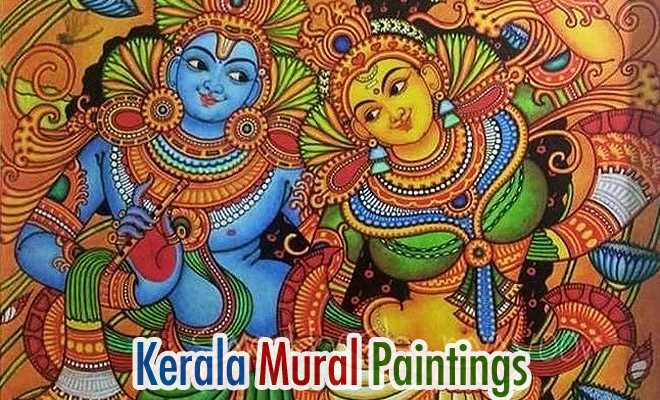
Kerala is home to several fascinating legends and mythological stories, and these traditional paintings beautifully depict these tales. The artists skillfully use brushstrokes to bring these stories to life, depicting gods, goddesses, and mythical creatures in intricate detail. The stroke of a brush can depict the tenderness of a mother’s love or the fierceness of a warrior’s valor.
Everyday Life
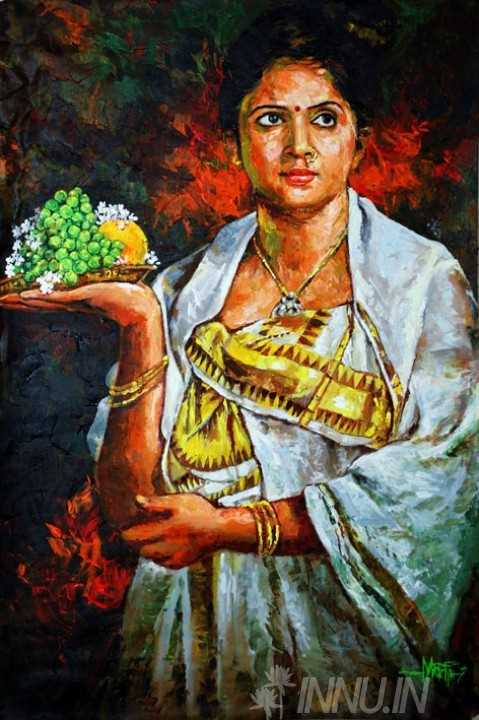
The traditional paintings of Kerala also capture the essence of everyday life in the region. From village scenes to agricultural activities, these paintings provide a glimpse into the lives of the people of Kerala. The brushstrokes in these paintings beautifully depict the emotions and experiences of the people, showcasing their joys, struggles, and traditions.
Overall, the brushstrokes in the traditional paintings of Kerala play a vital role in telling stories. They bring life and depth to the artwork, allowing viewers to connect with the culture and ethos of the people. These paintings are not just images; they are windows into a world of stories waiting to be explored.
Preserving Kerala’s Traditional Art
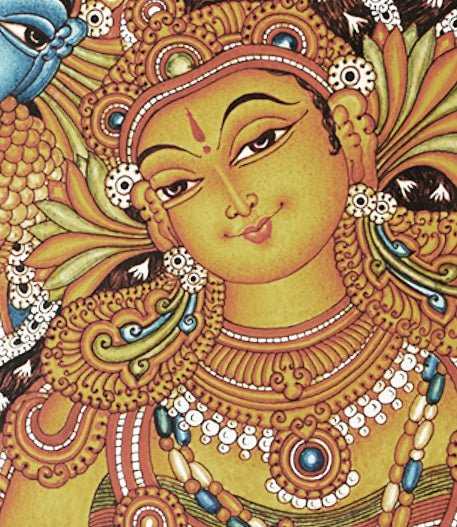
Kerala, located in the southern part of India, is known for its rich cultural heritage. One of the most significant aspects of Kerala’s culture is its traditional art, which includes various forms of painting. These paintings have been passed down through generations and are an important part of the state’s identity.
Importance of Traditional Art
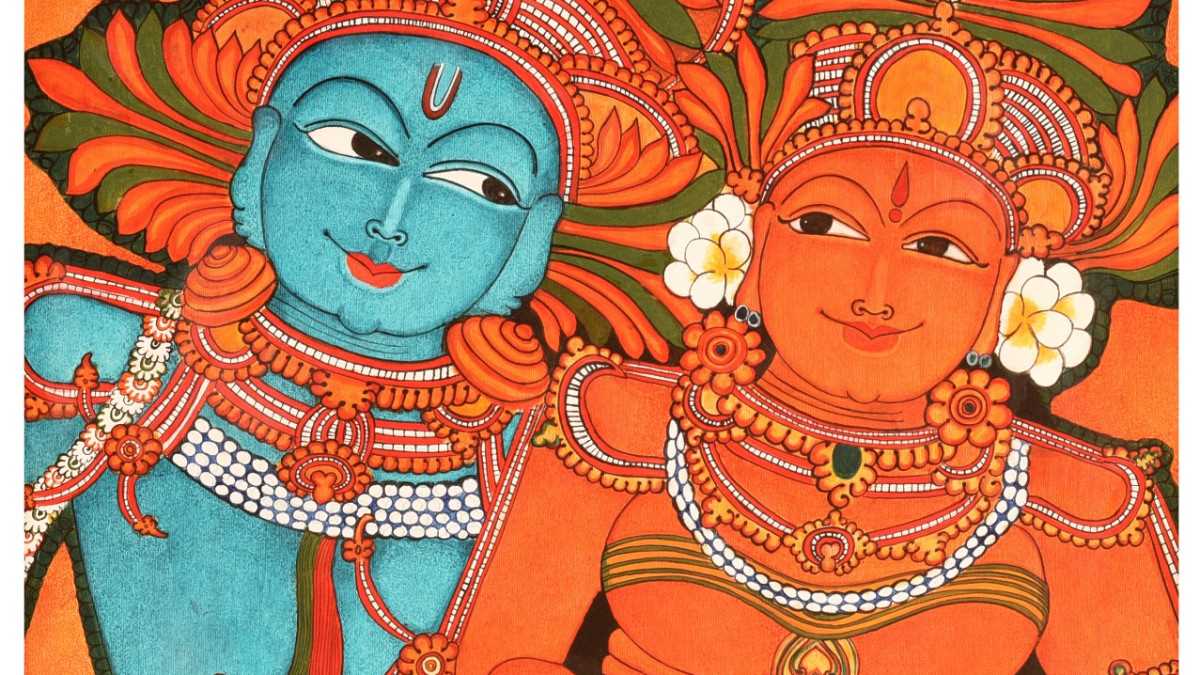
Traditional paintings in Kerala reflect the history, mythology, and religious beliefs of the people. They depict various scenes from ancient epics, such as the Ramayana and the Mahabharata, as well as scenes from daily life and nature. These paintings are not just decorative, but also serve as a medium to convey stories and preserve the cultural heritage.
Preserving Kerala’s traditional art is crucial for several reasons. Firstly, it helps in maintaining the cultural identity of the state and its people. These paintings are an integral part of Kerala’s artistic heritage and losing them would mean losing a part of its history. Secondly, traditional art forms like these provide livelihoods for many artisans and craftsmen, who continue to practice and pass on their skills to future generations.
Preservation Efforts
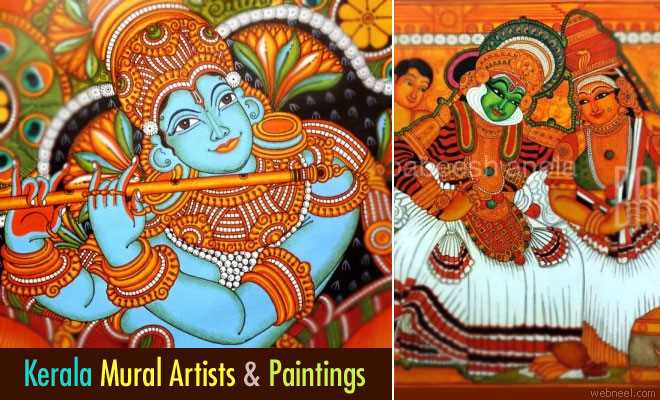
- Government Initiatives: The government of Kerala has taken various initiatives to promote and preserve traditional art forms. It has established institutions and art academies that provide training and support to artists. These institutions also organize exhibitions and workshops to raise awareness about the importance of traditional art.
- Artistic Collaborations: Many artists and organizations collaborate with traditional painters to create new artworks that blend traditional and contemporary styles. This helps in keeping the art form relevant and appealing to younger generations.
- Museum Collections: Several museums in Kerala, such as the Kerala Folklore Museum and the Durbar Hall Art Gallery, showcase traditional paintings and other forms of art. These collections not only preserve the artworks but also educate visitors about their significance.
- Community Engagement: Local communities play a crucial role in preserving traditional art. They organize festivals and events where artists showcase their skills and interact with the public. This fosters appreciation and support for the art form.
Preserving Kerala’s traditional art is an ongoing effort that requires a collective approach from the government, artists, organizations, and the general public. By maintaining and promoting these art forms, Kerala can ensure that its cultural heritage continues to thrive and inspire future generations.
Embracing the Traditional
When it comes to traditional paintings in Kerala, there is a strong sense of cultural heritage and historical significance. The people of Kerala have long embraced the traditional art forms and techniques, passing them down through generations.
One of the most well-known traditional styles of painting in Kerala is the Kathakali style. This style of painting is characterized by vibrant colors, intricate detailing, and the depiction of characters from the ancient Indian epic, the Mahabharata. The Kathakali paintings often show dramatic scenes and are an integral part of the Kathakali dance performances.
Preservation through Mural Paintings
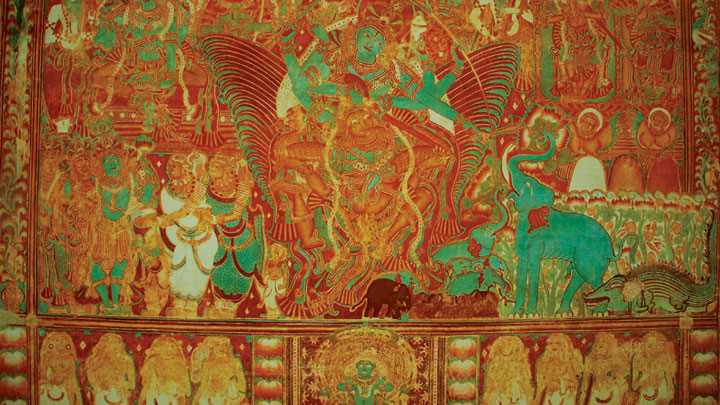
Kerala is also known for its stunning mural paintings, which are found in many ancient temples and palaces. These paintings depict mythological themes and religious stories, and the artists were often commissioned by kings and nobles to create these magnificent artworks.
One of the unique aspects of the mural paintings in Kerala is the use of natural pigments made from minerals and plants. This not only gives the paintings a vibrant and organic look but also contributes to their longevity. The artists meticulously prepare these pigments by grinding them into a fine powder and mixing them with natural binders.
Revitalizing Traditional Techniques
While traditional paintings have a strong place in Kerala’s art history, contemporary artists are also exploring new ways to embrace and revitalize these techniques. They are experimenting with different styles, subjects, and materials while still staying true to the traditional roots.
The embrace of traditional paintings in Kerala is not only a way to honor the past but also a means to inspire future generations. By preserving and showcasing these traditional art forms, Kerala continues to celebrate its rich cultural heritage and keep its artistic traditions alive.

I am a mural enthusiast and a fervent admirer of street art. Rather than creating murals myself, I am passionate about collecting them. My love for street art knows no bounds. I am dedicated to curating and cherishing these artworks that grace the streets. My collection stands as a testament to my profound appreciation for this form of artistic expression.
read about me




